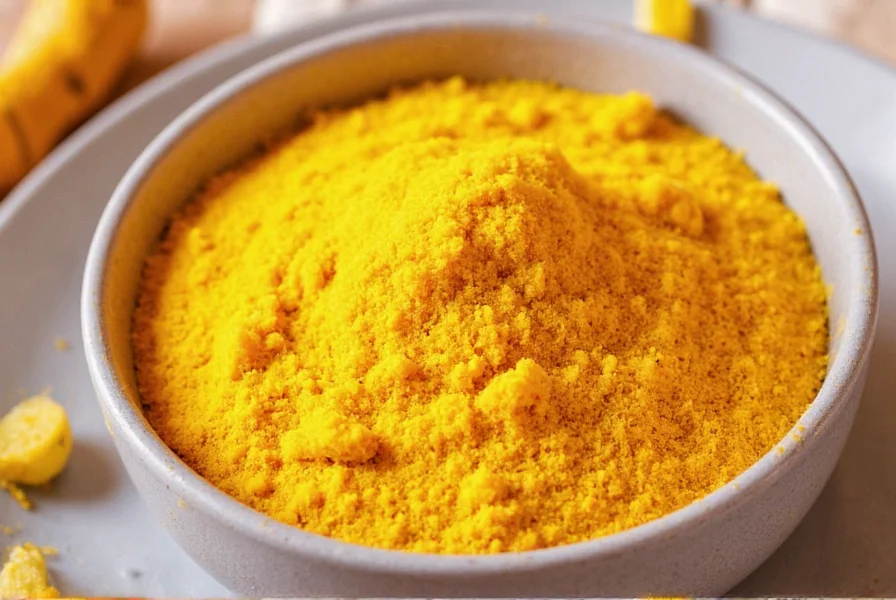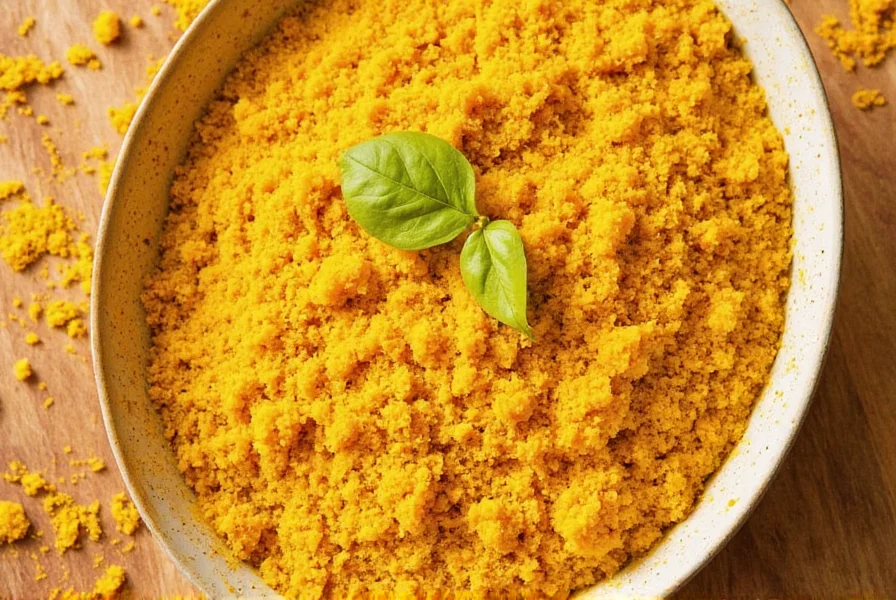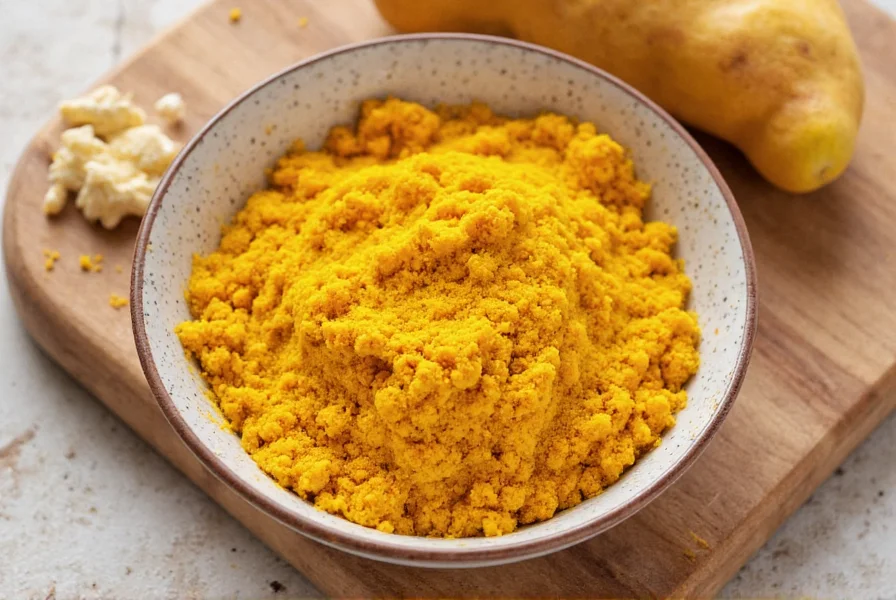For centuries, Ayurvedic medicine has utilized turmeric for its remarkable healing properties. Modern science now confirms what traditional healers knew all along: curcumin, turmeric's active compound, offers significant anti-inflammatory and antioxidant benefits. However, many home cooks make critical mistakes when preparing turmeric recipes that dramatically reduce its effectiveness.
Why Proper Turmeric Preparation Matters
Curcumin has notoriously low bioavailability on its own. Research from the Journal of Food Science shows that combining turmeric with black pepper increases absorption by 2,000%. The piperine in black pepper inhibits certain digestive enzymes, allowing more curcumin to enter your bloodstream. Similarly, curcumin is fat-soluble, meaning pairing it with healthy fats like coconut oil or olive oil significantly boosts its absorption.
When developing anti-inflammatory turmeric recipes, these three elements must work together:
| Essential Component | Scientific Reason | Practical Application |
|---|---|---|
| Turmeric (curcumin) | Primary anti-inflammatory compound | Use 1/2-1 tsp powder per serving |
| Black pepper | Piperine increases absorption 20x | Add 1/8 tsp with turmeric |
| Healthy fat | Curcumin is fat-soluble | Include 1 tsp coconut/olive oil |
The Perfect Golden Milk Recipe
Golden milk represents one of the most effective turmeric recipes for inflammation relief. This traditional Ayurvedic beverage combines turmeric with complementary ingredients to maximize health benefits while creating a delicious, comforting drink.

Ingredients
- 2 cups unsweetened almond milk (or coconut milk)
- 1/2 teaspoon turmeric powder
- 1/8 teaspoon black pepper
- 1 teaspoon coconut oil
- 1/2 teaspoon cinnamon
- 1 teaspoon raw honey or maple syrup
- Pinch of ginger powder (optional)
Step-by-Step Preparation
- Combine all ingredients in a small saucepan
- Whisk thoroughly to prevent clumping
- Heat over medium-low for 5-7 minutes (do not boil)
- Strain through fine mesh sieve if using fresh turmeric
- Pour into mug and enjoy warm
This how to make golden milk with turmeric recipe takes just 10 minutes and delivers maximum curcumin absorption. For best results, consume in the evening as turmeric may interact with certain medications. The healthy fats from coconut milk and oil, combined with black pepper, create the ideal environment for curcumin absorption.
Three Additional Turmeric Recipes for Daily Health
1. Turmeric Roasted Vegetables
Transform ordinary vegetables into an anti-inflammatory powerhouse with this simple technique. Root vegetables like sweet potatoes, carrots, and beets pair exceptionally well with turmeric's earthy flavor.
- Toss 4 cups chopped vegetables with 1 tsp turmeric, 1/8 tsp black pepper, 1 tbsp olive oil, and sea salt
- Roast at 400°F for 25-30 minutes until caramelized
- Add fresh lemon juice before serving to enhance flavor
2. Turmeric-Infused Rice
Elevate basic rice into a health-promoting side dish that complements any meal. This turmeric recipe for inflammation works particularly well with coconut milk instead of water.
- Replace 1/4 of cooking water with coconut milk
- Add 1/2 tsp turmeric, 1/8 tsp black pepper, and 1 tsp coconut oil to cooking liquid
- Cook rice as usual, then fluff with fresh cilantro
3. Simple Turmeric Dressing
Create a versatile dressing that transforms ordinary salads into anti-inflammatory meals. This easy turmeric cooking tip requires minimal preparation.
- Whisk together 3 tbsp olive oil, 1 tbsp apple cider vinegar, 1/2 tsp turmeric, 1/8 tsp black pepper, and 1 tsp Dijon mustard
- Add honey to taste and a pinch of garlic powder
- Shake vigorously in a sealed jar before each use
Maximizing Your Turmeric Experience: Essential Tips
Even the best turmeric recipes fail when common preparation mistakes occur. Follow these evidence-based guidelines to ensure you receive maximum benefits:
- Never heat turmeric above 300°F - High temperatures degrade curcumin. Roast vegetables at 400°F maximum and add turmeric during the last 10 minutes of cooking
- Always include fat - Curcumin binds to fat molecules. Use at least 1 teaspoon of healthy fat per 1/2 teaspoon of turmeric
- Combine with vitamin C - Citrus enhances curcumin absorption. Add lemon or lime juice to finished dishes
- Store properly - Keep turmeric in an airtight container away from light. Properly stored, it maintains potency for 6-12 months
- Avoid aluminum cookware - Turmeric reacts with aluminum, reducing potency and potentially creating harmful compounds
Many people wonder how much turmeric they should consume daily. The Arthritis Foundation recommends 500-1,000 mg of curcumin twice daily, which translates to approximately 1/2 to 1 teaspoon of turmeric powder in your healthy turmeric spice recipes. Remember that consistency matters more than quantity - daily consumption of smaller amounts delivers better results than occasional large doses.

Addressing Common Turmeric Concerns
While turmeric offers numerous health benefits, certain considerations ensure safe and effective use. These best turmeric recipes for health incorporate safety guidelines while maximizing benefits.
Individuals taking blood thinners should consult their physician before consuming therapeutic amounts of turmeric, as curcumin has mild anticoagulant properties. Similarly, those with gallbladder issues may need to moderate intake, as turmeric stimulates bile production.
The bright yellow pigment in turmeric can stain surfaces and clothing. To prevent this, use glass or stainless steel cookware and add turmeric toward the end of preparation when possible. If staining occurs, a paste of baking soda and water usually removes turmeric stains effectively.
How much turmeric should I use in recipes for health benefits?
For therapeutic benefits, use 1/2 to 1 teaspoon of turmeric powder per serving. Always pair with 1/8 teaspoon black pepper and 1 teaspoon of healthy fat to maximize absorption. Consuming turmeric daily in moderate amounts delivers better results than occasional large doses.
Can I use fresh turmeric instead of powder in recipes?
Yes, fresh turmeric works well in recipes. Use a 3:1 ratio (3 parts fresh to 1 part powder). Peel and grate 1 inch of fresh turmeric root to replace 1/2 teaspoon powder. Fresh turmeric has slightly different compounds but still requires black pepper and fat for optimal absorption.
Why does my turmeric recipe taste bitter?
Bitterness usually occurs when turmeric is overheated or used in excessive amounts. Never heat turmeric above 300°F, and start with 1/4 teaspoon per serving, adjusting to taste. Adding a small amount of sweetener or acid (lemon juice) balances bitterness while enhancing curcumin absorption.
How long do turmeric recipes retain their health benefits after cooking?
Cooked turmeric dishes maintain benefits for 2-3 days when properly stored in glass containers in the refrigerator. The curcumin remains stable, but flavor may intensify over time. Reheat gently without boiling to preserve maximum benefits.
Can I make turmeric recipes without dairy?
Absolutely. Coconut milk, almond milk, and other plant-based alternatives work perfectly in turmeric recipes. The key is including healthy fats like coconut oil or olive oil to ensure proper curcumin absorption, regardless of the milk base you choose.











 浙公网安备
33010002000092号
浙公网安备
33010002000092号 浙B2-20120091-4
浙B2-20120091-4